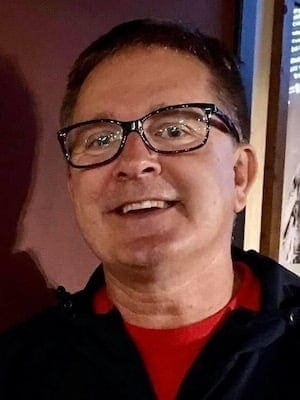“If you could open your mailbox and find anything inside, what would it be?” I asked a small group of second-graders after we read a story about a mole who opened her mailbox and found a kite.
I expected them to answer my question with things like video games, toys or basketballs.
But the first student who raised her hand looked at me with sincere, big brown eyes and said, “I would like to find a letter from my dad.” Her dad was away from the family, looking for work to help them live.
Art Linkletter and Bill Cosby reminded us that “kids say the darndest things.” In my classroom, my kids say the profoundest things.
According to the U.S. Department of Housing and Urban Development, about 80,000 families – typically a single woman with young children – are homeless on any given night.
My own experience helps me put hands and feet and faces on this number.
I volunteer with GAIHN, the Greenville Area Interfaith Hospitality Network, an organization that helps homeless families in my city find shelter in houses of worship as they work toward obtaining permanent housing.
Some of the children in this program are students in my elementary school. I teach in a Title I school in which more than 90 percent of our students qualify for free and reduced lunches and Medicaid.
So it doesn’t surprise me when my students talk about “needs” instead of “wants” in profound ways.
For three years, I lived and worked in a large housing project in Louisville, Ky. I was a middle-class, white graduate student and “where I came from” and “who I came from” clouded the lenses through which I saw the economically poor people around me.
I remember the first time those lenses began to clear. It was the week before Christmas, and I was driving a rickety, old, orange van around the neighborhood, dropping off children from my after-school program.
The last kid on the van was Shawn. He was a great kid, small in stature but big in heart. He was a middle-schooler who was equally gifted and talented in proving a theorem in geometry as he was in running our community basketball team as the point guard.
I stopped in front of his building and looked through the rear-view mirror to see if I could see his smile.
He had a wonderful smile that usually cheered and brightened my days. That evening, though, he wasn’t smiling. His chin was on his chest and he was looking down at the floor mats of the van.
“Shawn, are you OK? What’s the matter?” I asked.
He just shook his head back and forth.
“What’s wrong, buddy? It’s Christmas. Aren’t you excited about the presents you’re going to get?”
The week of Christmas had always been an exciting time for my friends, my brothers and me. We knew we would wake up on Christmas morning and find video games, toys, basketballs, clothes and all of the things that would bring smiles to our faces.
It never occurred to us that there were children like Shawn who would wake up on that morning and find nothing.
He slouched over, slid the side door open, and slipped out into the cold night without saying a word.
Yet I think I heard this inner-city child, I think I saw with momentary clarity into his life and into mine.
Our ears and our eyes had picked up the distorted sounds and sights of our popular culture that teach us that life and happiness grow from buying and consuming things.
The question I asked him about presents said, “Of course, everything is all right because soon you’ll be getting things.”
His silent answer to me was, “There’s not enough money in my house to buy anything so I must be nothing.”
My favorite Latin quote is Esse quam videri: “To be is more important than to appear to be.”
Stephen Colbert, the great satirist, turned the quote around on “The Colbert Report” to challenge us to think about how our popular culture attempts to shape us to believe Videri quam esse: “To appear is more important than to be.”
As teachers, we can see our students as little consumers whose purpose in life will be to buy things that will make them happy and that will cause the American economy to grow.
I wonder if we are teaching them a videri quam esse economics. I suspect it was easy for my teachers to see and teach me that way in my suburban schools in South and North Carolina.
I suspect it is easy for teachers to see their students that way in schools filled with middle-class, upper-middle-class and wealthy students today.
But what about economically poor children?
The Children’s Defense Fund tells us there are 15.5 million children living in poverty in the United States. What does this kind of economics say to them? Are we teaching them that since their families can’t consume, then they have no purpose and meaning in life?
And what does this kind of economics say to all of our students? How does it affect the way they see? What does it do to their hearts and minds? What does it do to our world?
What would an esse quam videri economics look like?
TrevorBarton teaches second grade and is a member of First Baptist Church in Greenville, S.C. This column first appeared on the Teaching Tolerance website of the Southern Poverty Law Center.
A fourth grade public school teacher and member of First Baptist Church in Greenville, South Carolina.

